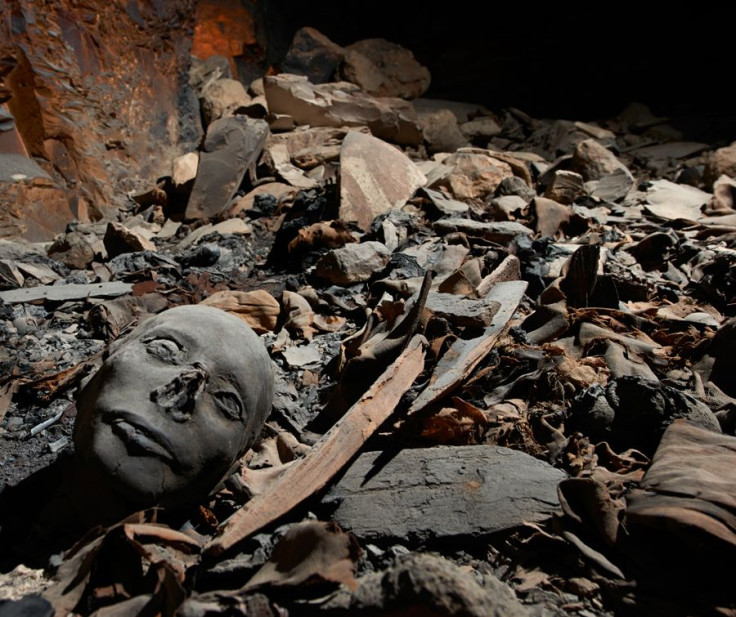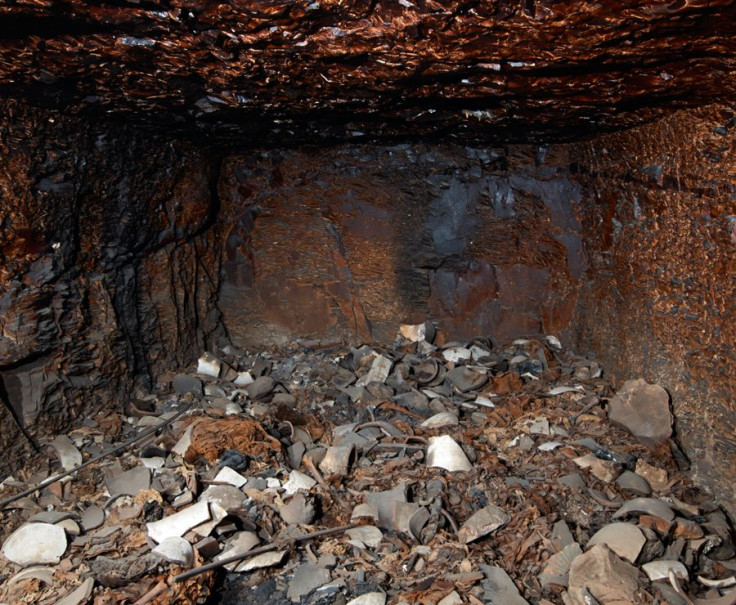Ancient Tomb Discovered In Egypt Contains About 50 Mummies From ‘Royal Entourage’ [PHOTOS]

Egyptologists have uncovered the remains of at least 50 people inside an ancient tomb in Valley of the Kings close to the city of Luxor.
The tomb, which dates back to the 18th dynasty kings who ruled Egypt during the 14th century BC, is believed to house several children and family members of two pharaohs. Known as tomb KV 40, the necropolis has been excavated by Egyptologists from the University of Basel for the past three years. The mummified remains may shed light on its occupants.
"We discovered a remarkable number of carefully mummified newborns and infants that would have normally been buried much simpler," Susanne Bickel, an Egyptologist involved in the excavation, said in a statement. "We believe that the family members of the royal court were buried in this tomb for a period of several decades."

Scientists found the remains of at least 50 people in the center chamber and three in side chambers. Inscriptions in the tomb describe that some of the remains belong to eight unknown royal daughters, four princes and several foreign ladies. The fact they were buried close to the royal tomb suggests it signifies they were considered important.
While the 3,300-year-old tomb was looted during antiquity and at the end of the 19th century, archaeologists were still able to recover textiles, mummy bandages, linen cloths and bones. Tomb raiders tore apart the adult mummies, but the infant ones have largely remained intact. Scientists have yet to determine their cause of death.
"What is certain is that they did not die at the same time (no epidemic), but over a certain time span," Bickel told LiveScience.
KV 40 was discovered in 2012. On the surface the tomb resembles a depression on the ground. Excavations uncovered a 16-foot-deep chamber that has a shaft, corridor and four rooms. Until recently, nothing was known of the tomb’s layout or who was buried there. But despite the latest findings, archaeologists are still left with unanswered questions.
"Roughly two-thirds of the tombs in the Kings' Valley are nonroyal. Because the tombs do not have inscriptions and have been heavily plundered, we so far have only been able to speculate on who lies buried in them,” Bickel said.
The nonroyal tomb will also shed light on a lesser-known aspect of ancient Egyptian history.
“Now we start the process of research of objects, inscriptions and mummies, which offer us such a wonderful insight into the royal entourage in a very large sense," Bickel told NBC News. "So far, one knows very little about the nonroyal tombs. Most were entirely plundered.”
© Copyright IBTimes 2024. All rights reserved.






















